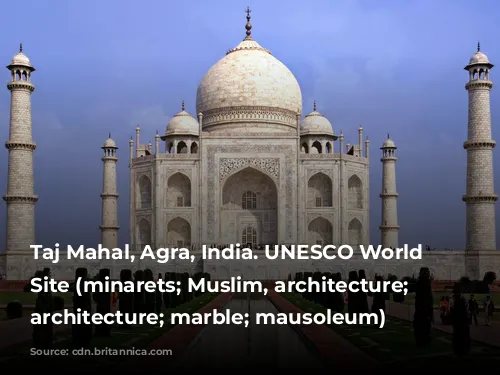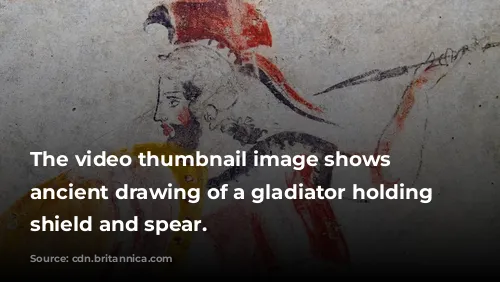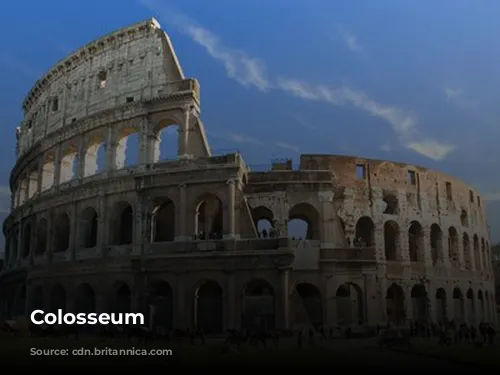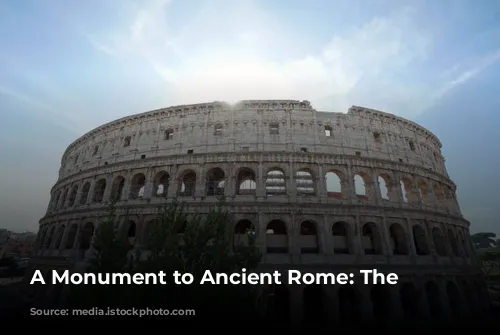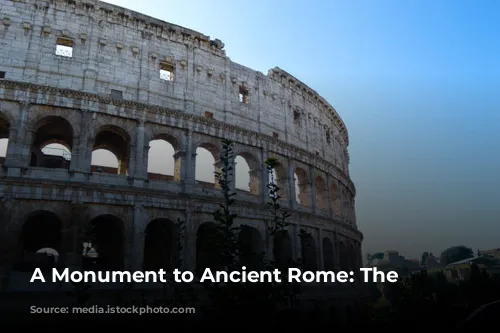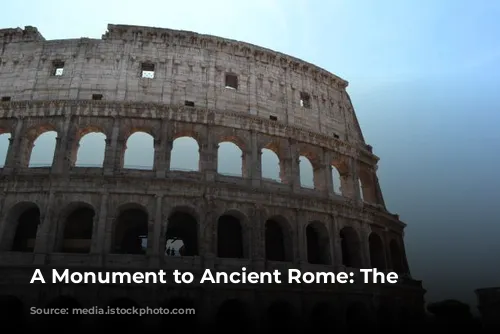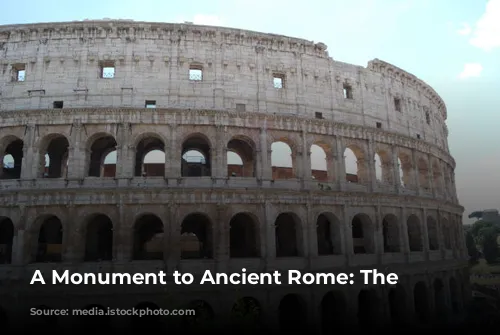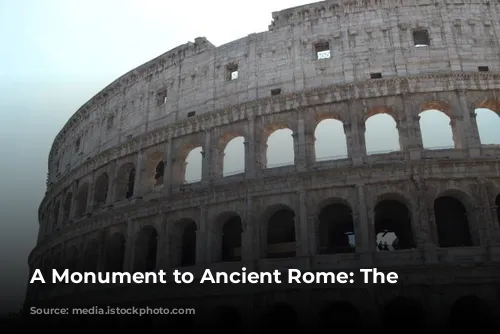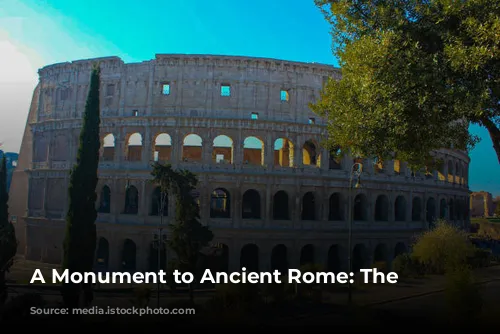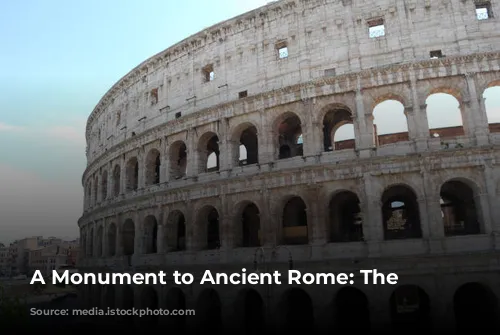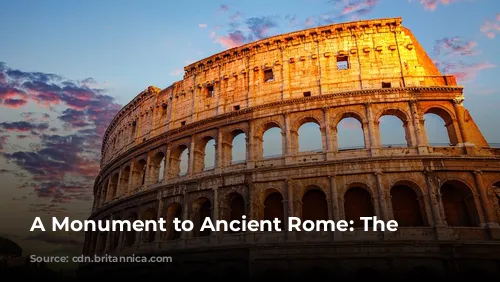The Colosseum, a towering testament to the architectural and engineering brilliance of ancient Rome, stands today as one of the few relatively intact structures from the Roman Empire. This magnificent amphitheater not only attracts millions of visitors each year but also serves as a significant source of revenue for the Italian government. In 2018, the Colosseum, Roman Forum, and Palatine Hill combined to generate over $63.3 million (€53.8 million), making them the top tourist attraction in Italy.
From Glory to Neglect and Restoration
After the fall of the Western Roman Empire, the Colosseum fell into a state of serious disrepair. The 12th century saw the Frangipane and Annibaldi families transform the once-grand arena into their fortress. Later, in the late 15th century, Pope Alexander VI granted permission for the Colosseum to be used as a quarry, its stones plundered for construction projects. This period of neglect lasted over a thousand years until state-funded restoration efforts began in the 1990s.
A Symbol of Imperial Might
The Colosseum’s construction was a significant undertaking that began under the reign of Emperor Vespasian between 70 and 72 CE. Vespasian, determined to revitalize Rome following the turbulent “Year of the Four Emperors” in 69 CE, envisioned the Colosseum as a center of entertainment. Just as with other amphitheaters across the empire, it was designed to host spectacular events such as gladiatorial combats, animal hunts, and even mock naval battles.
A Legacy of Blood and Stone
The Colosseum was finally dedicated in 80 CE by Titus, Vespasian’s son and successor. Titus’s son, Domitian, added the fourth story to the structure in 82 CE. It’s important to note that the Colosseum’s construction was funded with spoils from Titus’s conquest of Jerusalem in 70 CE, and Jewish slaves from Judea provided the labor.
The Colosseum, also known as the Flavian Amphitheatre, is an elliptical structure, towering four stories high at its peak, and constructed with stone, concrete, and tuff. Its impressive dimensions, 620 by 513 feet (189 by 156 meters), allowed it to accommodate an audience of up to 50,000 spectators. This grand structure, synonymous with the Roman Empire, was famously used for gladiatorial combat and other public spectacles.
A Grand Design: Building the Colosseum
The Colosseum’s construction began during the reign of Vespasian, somewhere between 70 and 72 CE. Situated east of the Palatine Hill, on the site of Nero’s Golden House, the Colosseum stands as a symbolic replacement for Nero’s artificial lake, which served as the centerpiece of his opulent palace. Vespasian, who rose to power from humble beginnings, chose to replace the tyrannical emperor’s private lake with a public amphitheater, a space designed to unite Romans and celebrate their collective identity.
The Colosseum’s design was a marvel of engineering. Unlike earlier amphitheaters, which were often built into hillsides for structural support, the Colosseum stands as a freestanding structure, a testament to Roman ingenuity. It is built with a complex system of barrel vaults and groin vaults, constructed with stone and concrete. The structure rises in three tiers, each encircled by arcades framed by engaged columns in the Doric, Ionic, and Corinthian orders. This ascending arrangement of columns became a cornerstone of Renaissance architecture, inspiring the renowned “assemblage of orders.” The Colosseum’s main structural framework and facade are made of travertine, while volcanic tufa was used for the secondary walls, and concrete for the inner bowl and arcade vaults.
An Arena of Entertainment and Death
The Colosseum boasted a seating capacity of 50,000 spectators, shielded from the sun by a massive retractable velarium, a retractable awning. The velarium, a feat of Roman ingenuity, was supported by masts extending from corbels built into the Colosseum’s uppermost story. Hundreds of Roman sailors were needed to manipulate the rigging that extended and retracted this awning, ensuring the comfort of the spectators.
The Colosseum hosted a vast array of events, including gladiatorial combats, animal hunts, and mock naval engagements. However, the authenticity of claims that the arena was used for the martyrdom of early Christians remains uncertain.
A Time of Neglect and Renewal
In medieval times, the Colosseum served a variety of purposes, from a church to a fortress for prominent Roman families like the Frangipane and the Annibaldi. The structure suffered damage from lightning, earthquakes, and vandalism, its once-magnificent marble seats and decorative elements disappearing over centuries of neglect. The Colosseum was treated little more than a quarry for over a thousand years, its stones plundered for building materials.
The 19th century saw the beginning of a concerted effort to preserve the Colosseum, with notable contributions from Pope Pius VIII. Restoration projects were undertaken in the 1990s, restoring this ancient marvel to its former glory. Today, the Colosseum stands as one of Rome’s most prominent tourist attractions, welcoming close to seven million visitors annually. It continues to captivate audiences with changing exhibitions exploring the culture of ancient Rome, offering a window into the grandeur and complexity of this ancient civilization.
